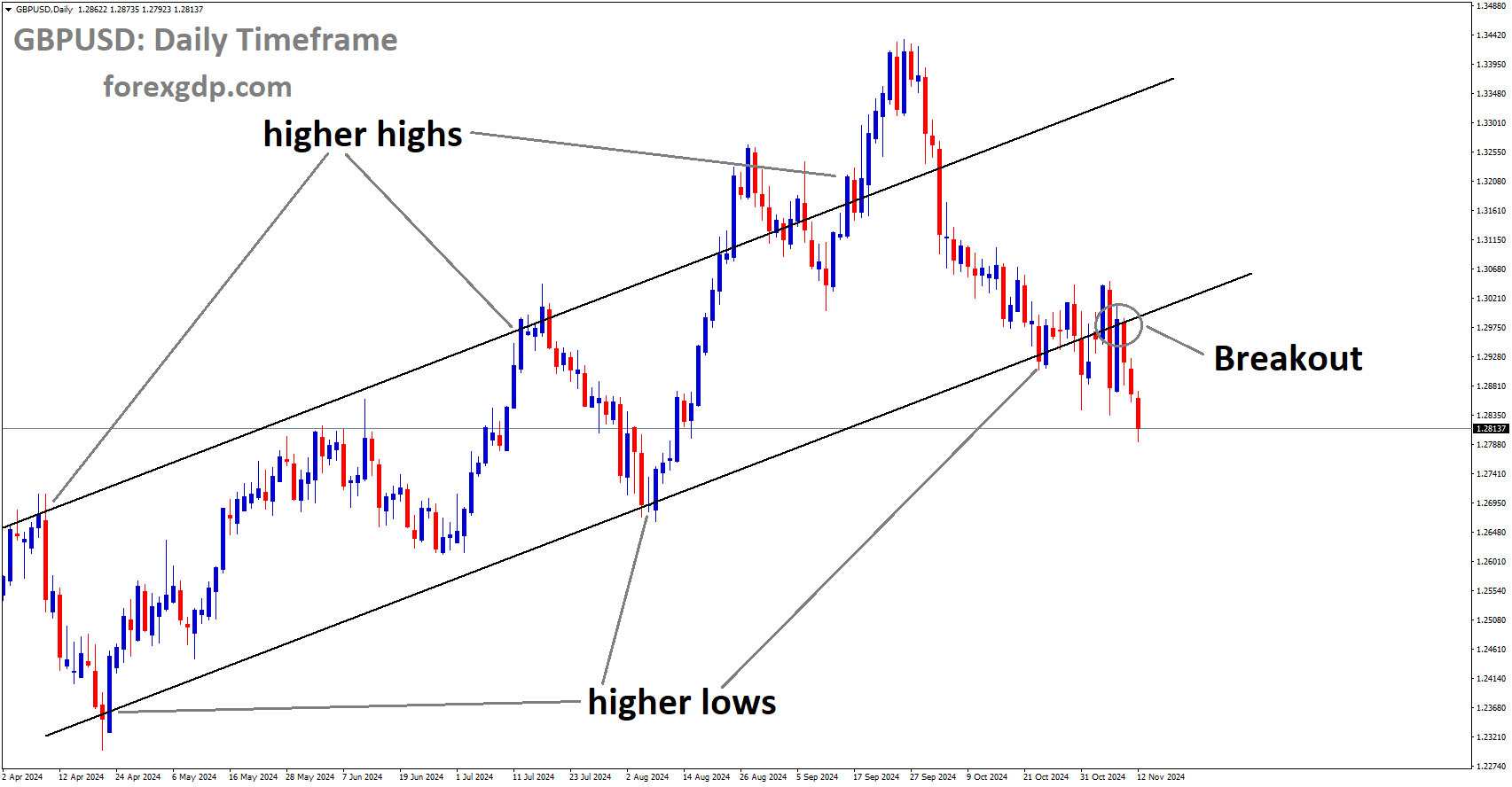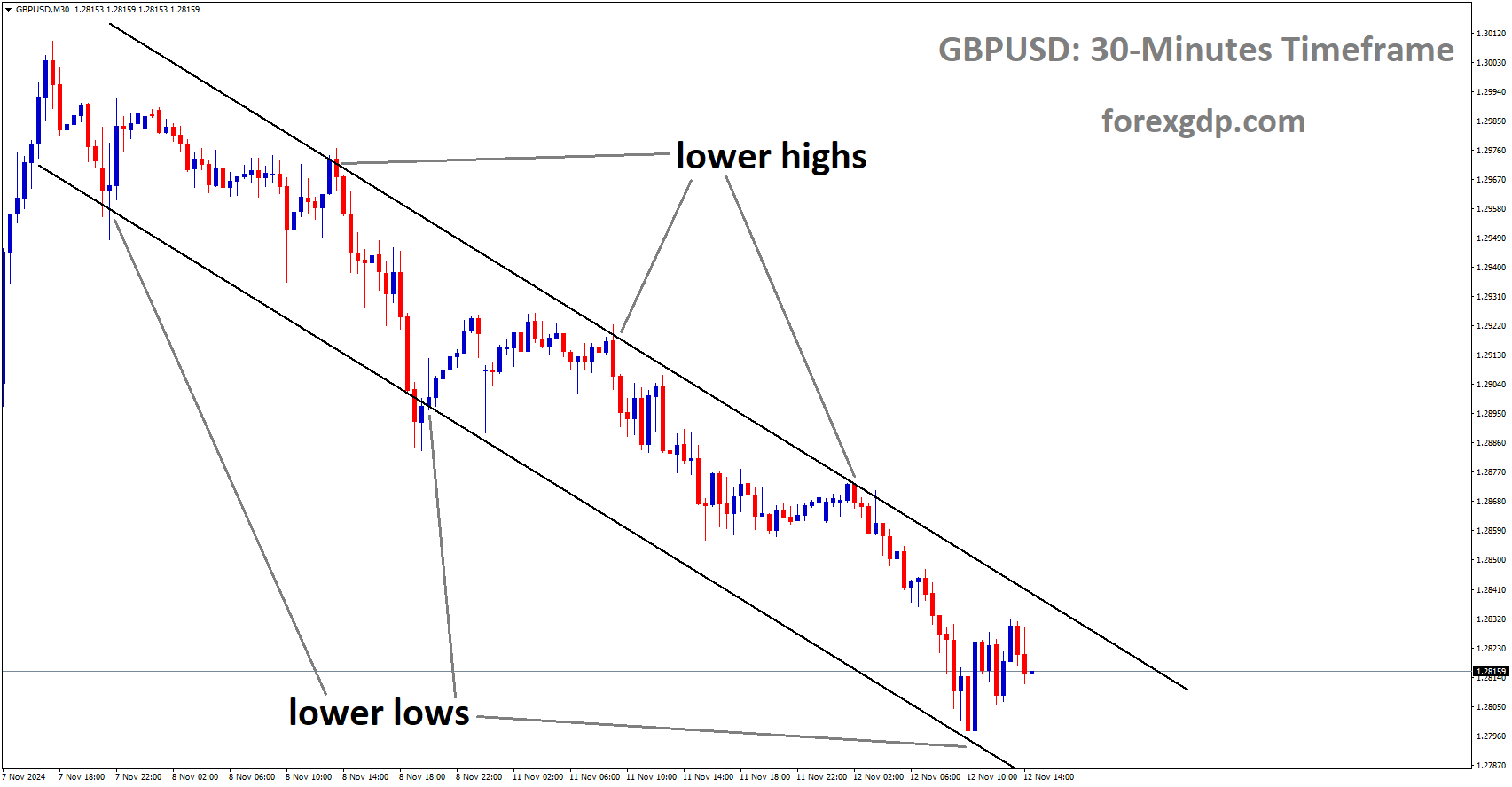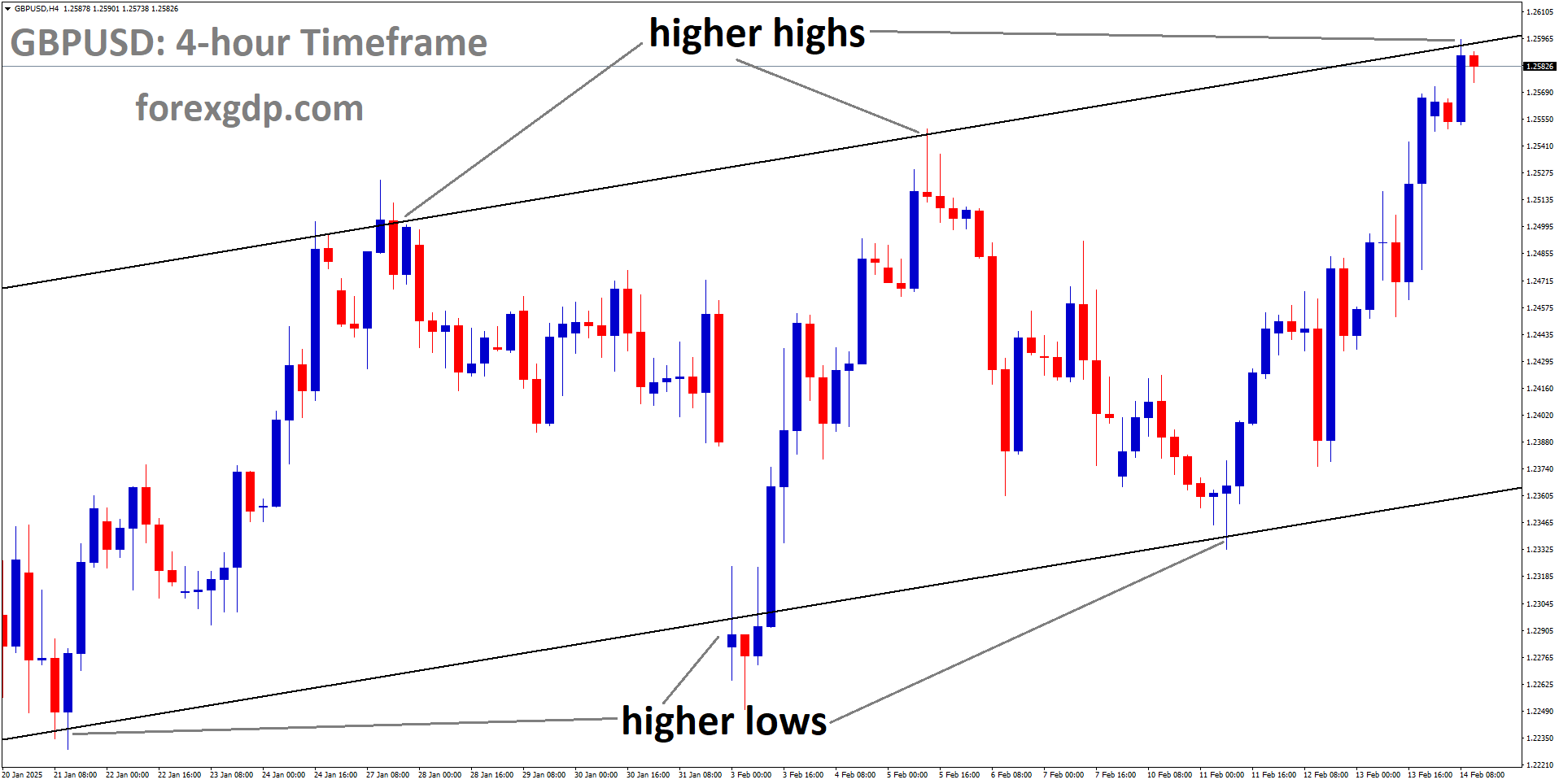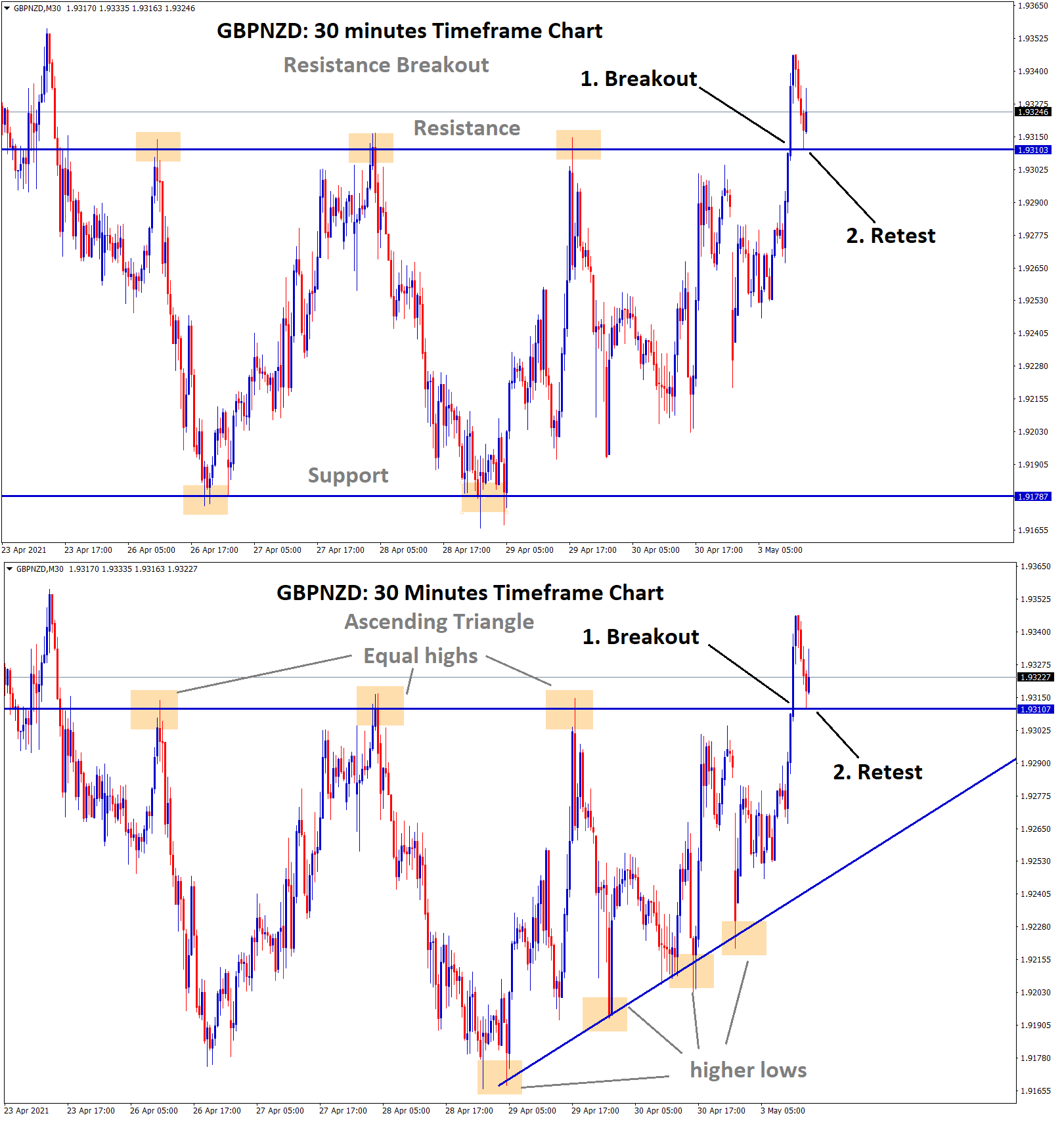GBPUSD is moving in a descending channel
#GBPUSD Analysis Video
The Pound Sterling Dips: A Closer Look at the UK’s Latest Employment Data and Economic Factors
The British Pound Sterling has faced a notable downturn recently, largely due to weaker-than-expected employment data in the United Kingdom (UK). While some economic indicators like wage growth show resilience, other areas reflect challenges that have influenced the currency’s value. In this article, we’ll explore what the recent unemployment data means, why investors are closely watching inflation figures, and how these economic shifts could affect future Bank of England (BoE) policy decisions.
UK Employment Data: Key Insights on the Job Market
The latest data from the Office for National Statistics (ONS) highlights some critical shifts in the UK labor market. In the three months ending in September, the UK’s unemployment rate increased, signaling a cooling in the job market that has raised concerns among investors and currency analysts alike. The UK’s unemployment rate rose to 4.3% from the previous 4.0%, surpassing expectations of 4.1%. This indicates that more people are finding it challenging to secure jobs, which can have ripple effects on the economy.
Wage Growth: A Surprising Upside
Despite the rise in unemployment, wage growth has shown unexpected strength. Average Earnings, excluding bonuses, rose by 4.8% over the same period, slightly higher than the forecast of 4.7%. Including bonuses, earnings growth reached 4.3%, up from the previous figure of 3.9%. Strong wage growth is often seen as a sign of economic resilience, as it suggests that employees are still able to negotiate higher pay. However, this data is mixed with the concern of a slowing labor market, creating a complex picture for the BoE.
The Role of the Bank of England: Balancing Inflation and Employment
The BoE has maintained a cautious approach to interest rate adjustments, especially compared to other G7 countries, due to persistent inflation in the service sector. This service inflation, driven in part by higher wages, puts pressure on the BoE to manage inflation without stifling economic growth. The rise in average earnings, although beneficial for workers, also contributes to inflationary pressures, especially in the service industry, which the BoE has to monitor closely.
Will the BoE Consider Rate Cuts?
With a weakening job market and inflation still above target levels, the BoE faces a dilemma. Markets are speculating that the BoE may reduce interest rates again in its December meeting, potentially by 25 basis points. The recent increase in wage growth could influence the BoE to hold off on rate cuts, as wage-driven inflation may still pose a risk. Balancing these factors will be essential for the BoE in the coming months.

US Economic Factors and Their Influence on the Pound Sterling
Another layer to the current currency dynamics is the strength of the US Dollar (USD). The US Dollar Index, which measures the dollar’s value against a basket of other major currencies, recently hit a four-month high. This has added pressure on the Pound Sterling, as a stronger dollar generally makes other currencies weaker in comparison.
US Politics and Economic Policies Impacting the Dollar
Political developments in the US have played a role in the USD’s recent strength. The anticipation of a more conservative fiscal approach, including potential corporate tax cuts, has fueled expectations of inflation. Higher inflation can lead the US Federal Reserve to adopt more cautious monetary policies. Investors are closely monitoring US economic indicators, like the Consumer Price Index (CPI), as they await clearer guidance from the Fed on future interest rate decisions.
Why Investors Are Focusing on Inflation Data for Guidance
Inflation has been a primary area of focus for investors, especially as central banks globally are making careful decisions on interest rates. The US inflation data, particularly the Consumer Price Index (CPI) for October, is set for release, and it will provide important clues for the Fed’s next moves. A strong CPI reading could confirm that inflation remains a challenge, potentially affecting global market dynamics and investor decisions.
Expected US Inflation Figures and Market Reactions
Economists predict the headline CPI to have grown by around 2.6% year-on-year for October, a modest increase from September’s 2.4%. The core CPI, which excludes more volatile food and energy prices, is expected to rise by about 3.3%. Any deviation from these expectations could influence investor sentiment, particularly if inflation rates appear to outpace previous forecasts. With the Fed targeting a 2% inflation rate, a strong CPI reading might push the Fed to be cautious with future rate cuts.

The Global Economic Context: What It Means for Investors
The interplay of the UK’s employment data, wage growth, and inflation, along with US economic indicators, reflects a broader global trend of economic uncertainty. For investors, this landscape presents both opportunities and challenges. The weakening job market in the UK might prompt the BoE to adjust its policies to support employment, while rising inflation in the US could lead the Fed to be more conservative.
This dynamic is particularly important for currency traders, as currency values often reflect investor sentiment regarding economic stability and growth potential. As the Pound Sterling dips due to weaker employment data, those in the forex market are paying close attention to both the BoE’s and Fed’s future decisions.
Summary: Navigating Uncertain Times in the Currency Market
Recent economic reports from the UK have revealed a labor market that’s facing challenges, even as wage growth shows resilience. The BoE is in a tough position, needing to manage inflation driven by wage increases while considering potential interest rate cuts to support a slowing job market. Meanwhile, US economic strength and inflationary expectations have bolstered the dollar, putting additional pressure on the Pound Sterling.
For investors and economic observers, the coming weeks are likely to bring further insights, especially as new data and policy announcements emerge. While the BoE grapples with the UK’s unique economic conditions, the Fed’s decisions regarding inflation and interest rates will be pivotal in setting the tone for the US dollar’s trajectory. Together, these factors will shape the global economic landscape, and staying informed will be key to navigating the evolving dynamics in the currency market.
Don’t trade all the time, trade forex only at the confirmed trade setups
Get more confirmed trade signals at premium or supreme – Click here to get more signals, 2200%, 800% growth in Real Live USD trading account of our users – click here to see , or If you want to get FREE Trial signals, You can Join FREE Signals Now!







